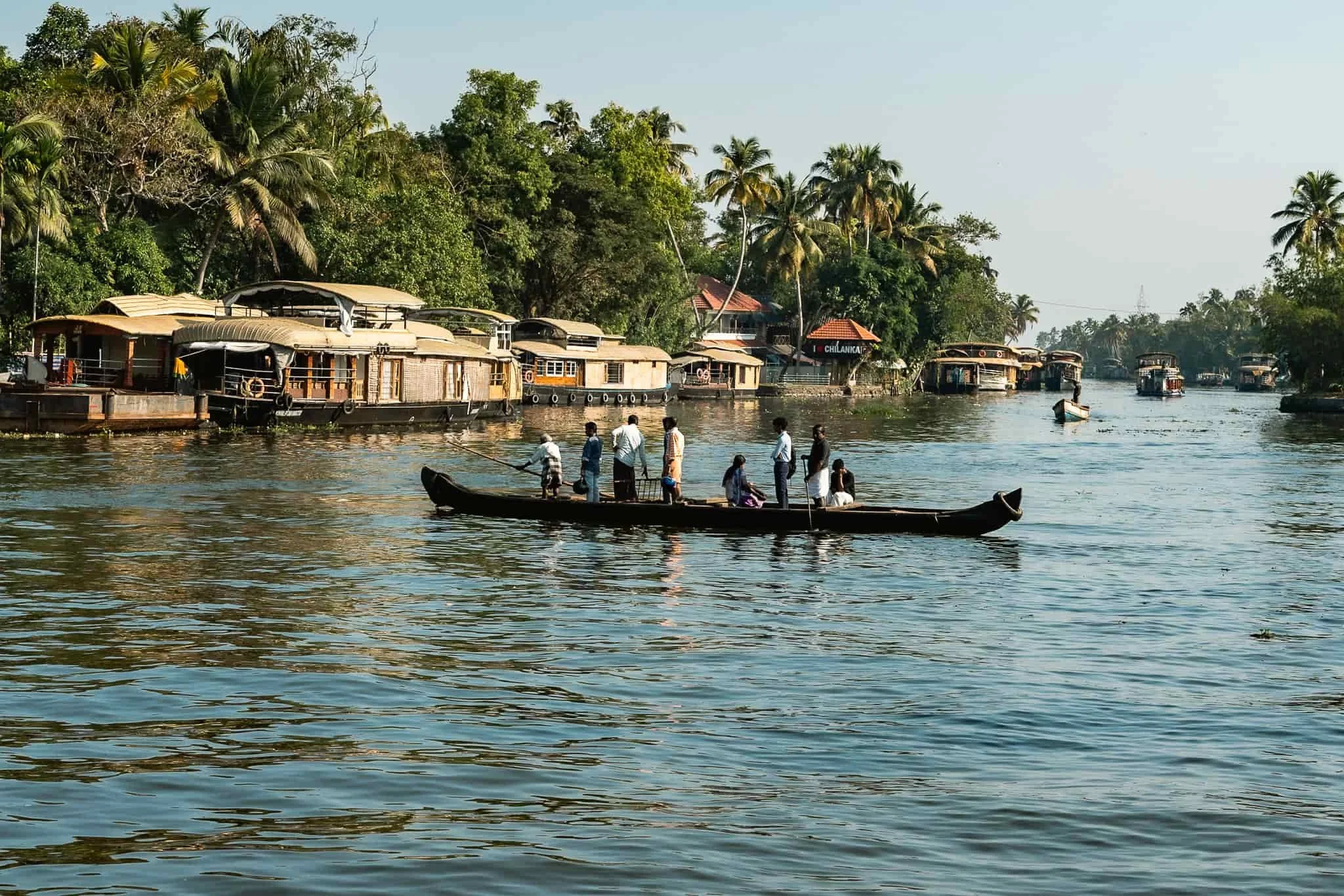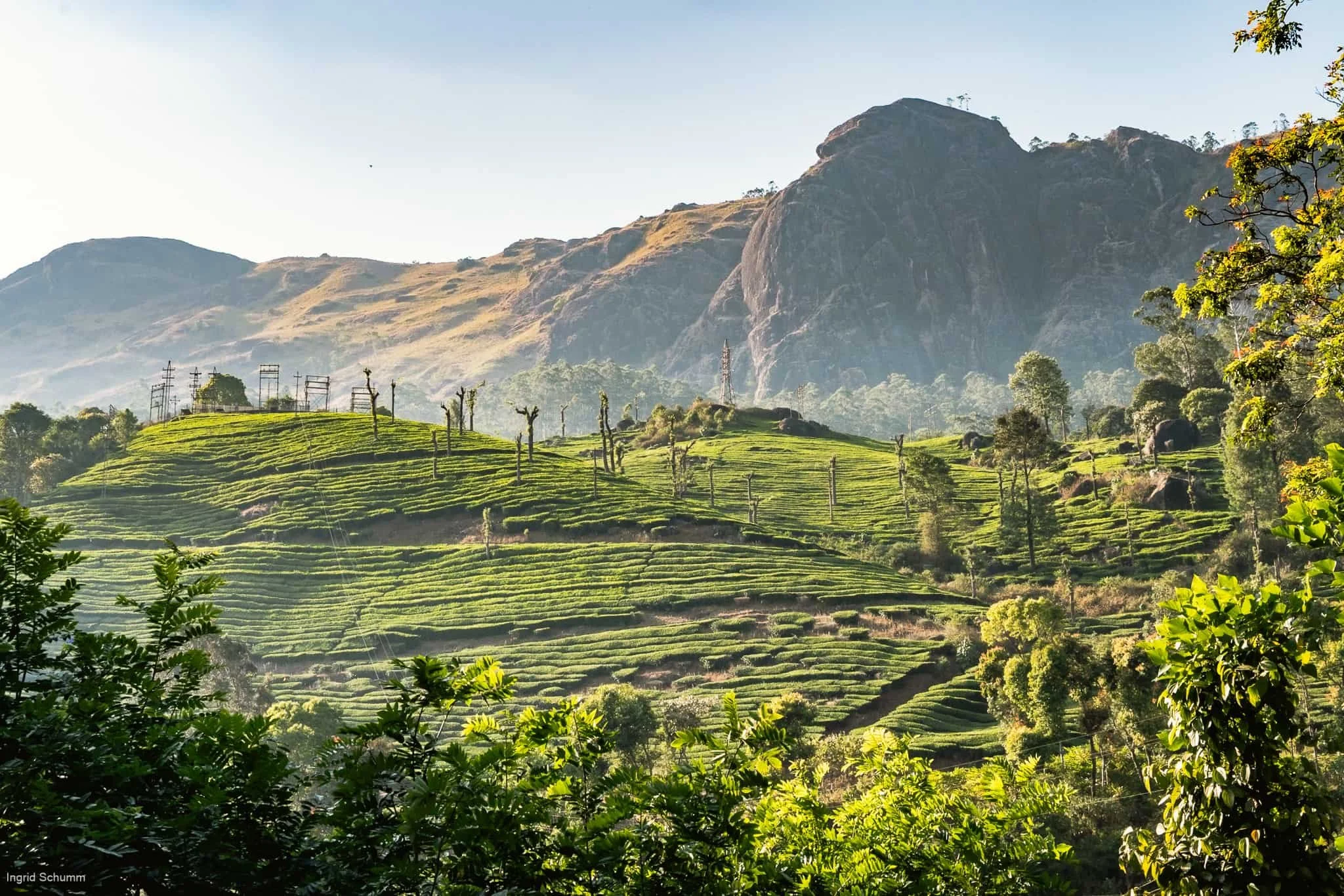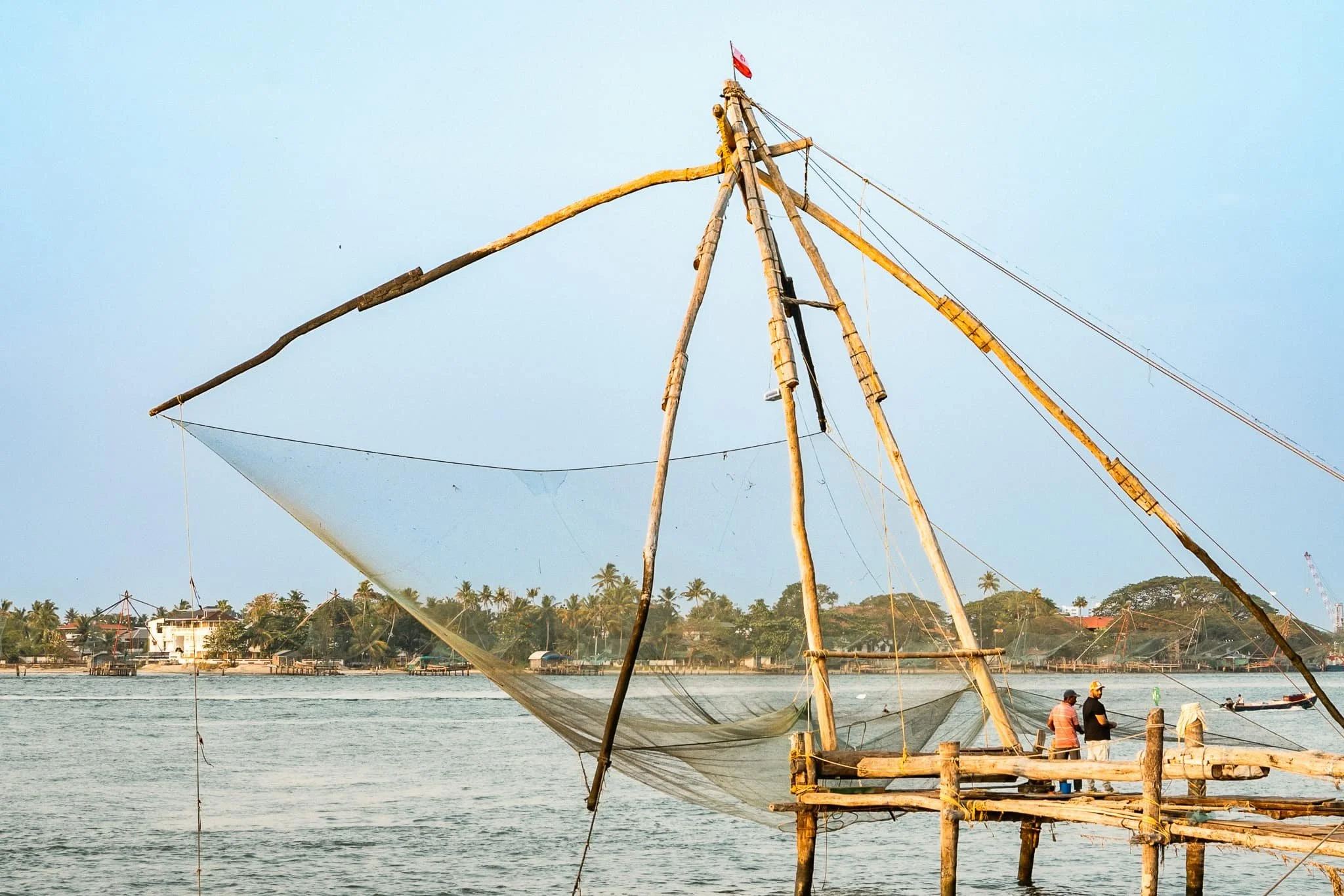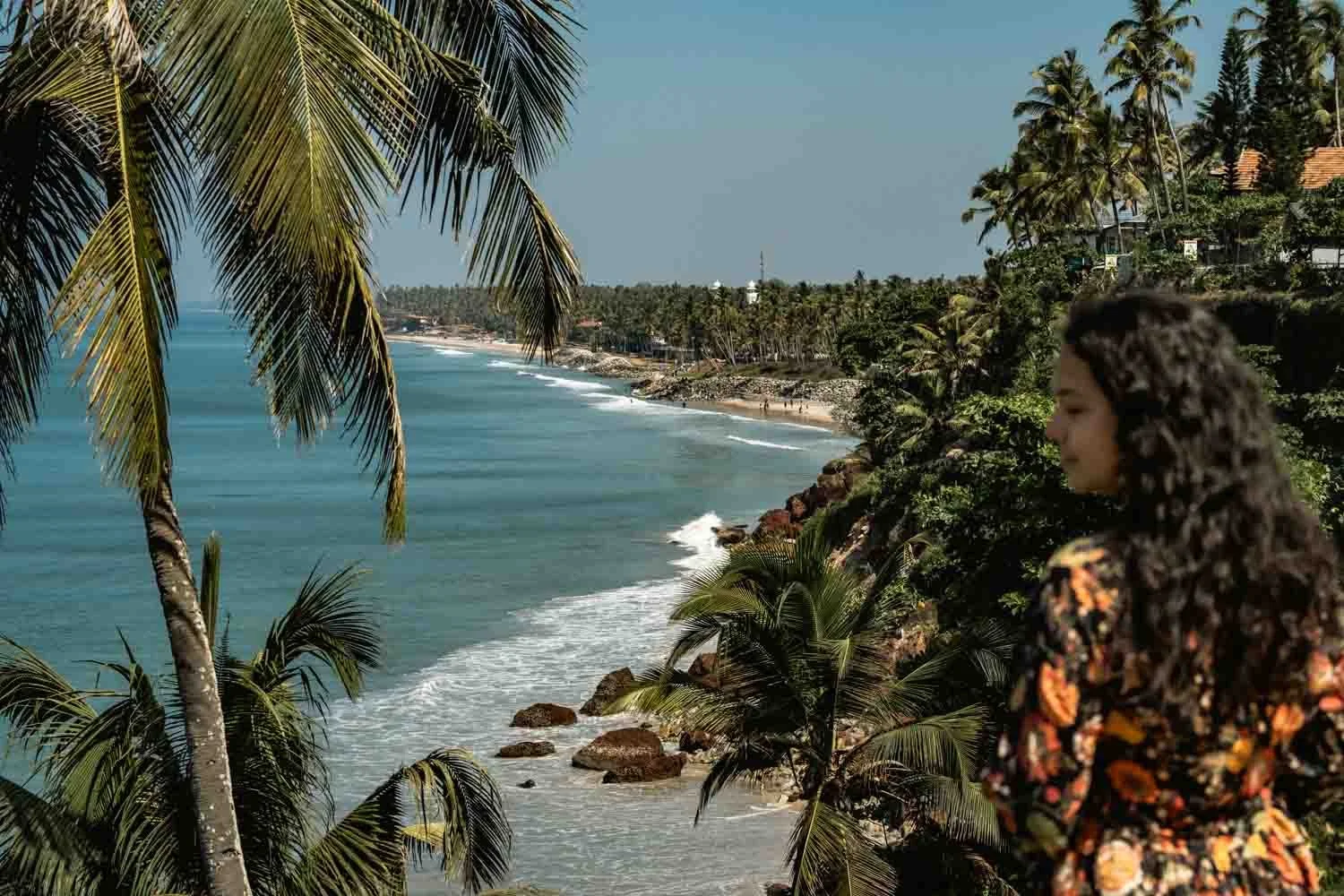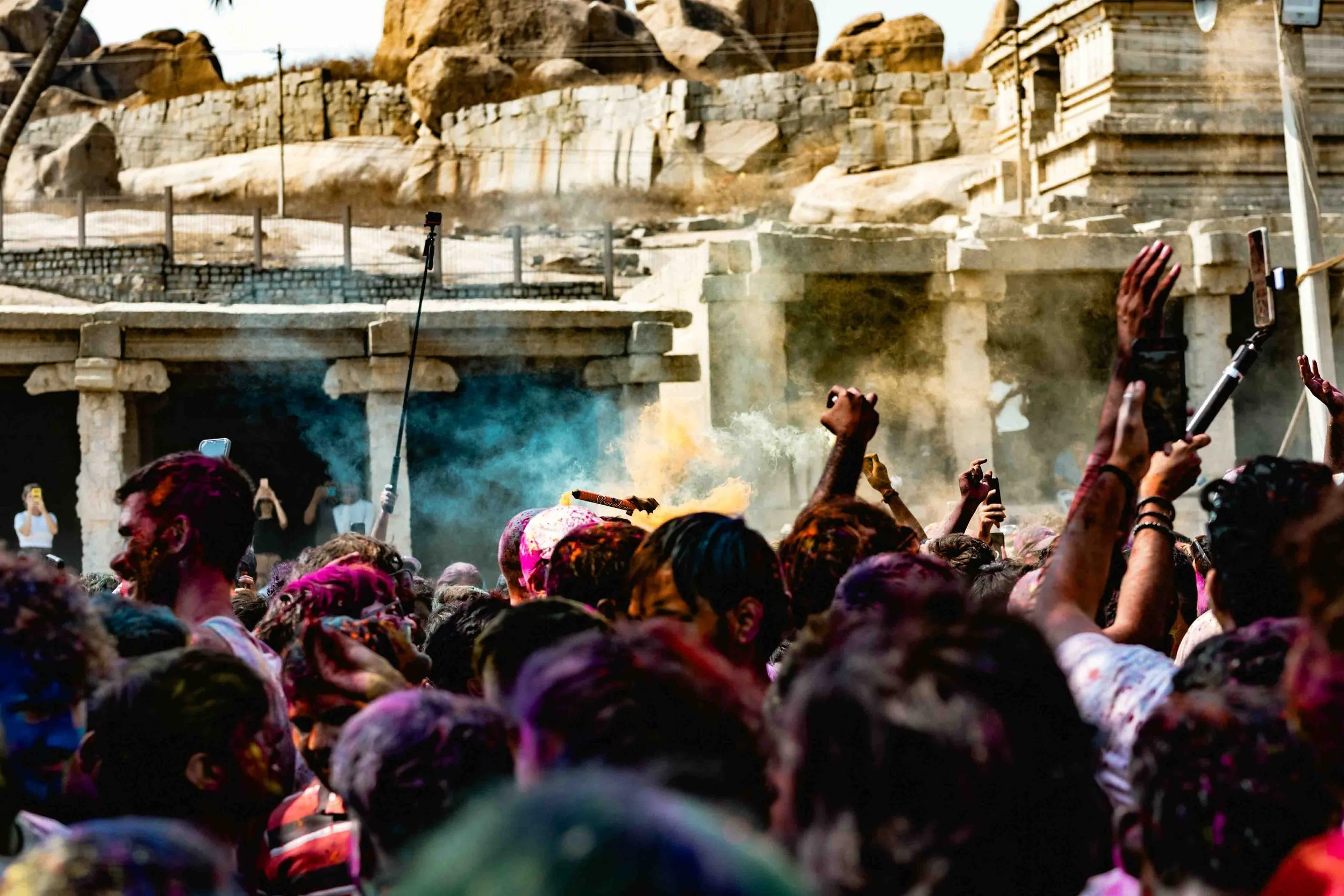Packing for India: What You Really Need to Bring
Planning a trip to India? After spending 3 months exploring the country, we’ve learned that packing smart is key to a smooth journey. From bustling cities to tranquil nature escapes and immersing in India’s vibrant culture, our packing guide has all the essentials you need to get ready for your adventure. Let’s dive in!Suitcase or Backpack?
India is not an accessible country, so traveling with a backpack is convenient. From busy cities to remote beaches and mountain treks, it will be easier to carry through uneven paths, non-existing sidewalks or broken ones or fit it in a tuk-tuk.
We recommend packing light the less you carry the easier it will be for you to hop on and off trains, use public transport, taxis, or walk on the streets.
We typically organize our clothes in packing cubes for quick access: one cube for bottoms, one for tops, one for outdoor clothing, and so on. We also pack our shoes in fabric reusable bags. It ultimately depends on your packing style.
Our Daypack
We have a list of the daypack items we rely on every day, regardless of the country. You can check Amazon Storefront list down below.
BUY |Our Daypack Staples on Amazon
For India, a helpful travel tip is to carry toilet paper, hand sanitizer, and liquid soap in a refillable bottle, as very very few public restrooms might lack these essentials. But most restaurants, malls, sightseeing attractions, stores, small shops will have hand soap. The local hygiene standard typically involves using the famous bum gun or a bucket with a mug. Toilet paper isn’t always available, though it’s more common than Indonesia or Thailand.
Mosquito repellent and sunscreen are also a must. We love the Indian mosquito repellent cream in India (Odomos). It is cheap and it feels great on the skin.
READ | Everyday Essentials: The Must-Have Items in our Daypack
OUR DAYPACKS |
Clothing
India’s climate varies greatly by region, so what you pack depends on where you’re going. In hot and humid areas like Kerala, Goa, or much of South India, lightweight, breathable fabrics like cotton or linen are ideal. Skip the synthetics as they trap heat and make you feel sticky fast. If you’re visiting during the monsoon season, especially in the south or along the west coast, a light rain jacket or poncho is a must. Quick-dry clothing is also a smart choice.
If you’re heading into the Himalayas or high-altitude regions like Ladakh, Sikkim, or Himachal Pradesh, you’ll need layers even in summer. Temperatures can drop sharply in the evenings, so pack a fleece or down jacket, thermal layers, and warm accessories like a hat and gloves if you’ll be above 3,000 meters.
For footwear, sandals or slip-ons are great in warm regions, especially when you’re constantly taking shoes off to enter temples or homes. But keep in mind that streets and paths can be rough or uneven. Flip-flops work for beaches or quick errands, but they offer little support. If you’ll be walking a lot or exploring mountainous terrain, go with comfortable sneakers or lightweight trekking shoes.
A scarf or shawl is a great addition, especially in the evenings or if you're traveling to cooler regions like the Himalayas. It can also be helpful in temples or other cultural sites.
If you’re heading for beach destinations like Goa or Kerala, don’t forget swimwear. While modest dress is important in most public spaces, swimwear is perfectly acceptable at beaches and pools.
In the evenings, long-sleeved shirts and light pants keep you comfortable and help protect against mosquito bites, particularly in tropical or rural areas.
BUY | Shop everything you found on this list on our Amazon Storefront
CLOTHING PACKING LIST
Dressing Respectfully
When visiting temples, palaces, and other cultural or religious sites in India, it’s important to dress respectfully by covering your shoulders, elbows and knees, as you won’t be allowed to enter without doing so.
Most Indians dress conservatively. Women typically wear clothing that covers the elbows and knees, avoiding anything too revealing. That said, it’s not unusual to see younger people in slightly shorter outfits, think dresses or shorts that fall above the knee, but not ultra-short styles. Keep in mind that showing cleavage is generally not the norm.
We encourage you to avoid wearing bikinis, going shirtless, or wearing see-through clothing when walking around or riding scooters. We think that it is best to bring conservative swimsuit. In touristy areas, you may see other foreigners doing so, but it’s not part of Indian culture. We believe in showing respect to the places we visit. Indian women typically swim at the beach fully dressed often in a sari, kurta, or regular clothes. Revealing clothing is uncommon, and if you want to avoid standing out or feeling out of place, it’s worth keeping this cultural norm in mind.
We’ve added all the items from our packing list to our Amazon storefront so you can easily find the products we love, use, and have personally tested during our travels.
To make things even easier, we also created a special section with modest clothing picks, for shopping or just outfit inspiration, based on what worked for us in India.
BUY | Find modest outfit ideas on our Amazon Storefront
a
Planning your next holiday?
When you make a purchase through our links, you support us without any extra cost to you.
Your support means the world to us!
FIND HOTELS | Booking.com
FIND FLIGHTS | Kiwi.com
GET TRAVEL INSURANCE | HeyMondo (get 5% off)
BOOK TOURS & ATTRACTIONS | Viator
BOOK A BUS / TRAIN / TRANSFER | 12Go
Toiletries
You’ll probably find most of your usual toiletries in India, so no need to overpack. Still, we recommend bringing sunscreen, solid shampoo or soap bars, and any personal skincare products you can’t go without. We love the indian mosquito repellent Odomos, so you can buy it once you arrive at any shop or pharmacy.
We try to reduce our liquids and use solid products to make carry-on travel easier and refill our favorite products instead of buying new travel-sized ones each time. For more of our go-to travel toiletries and eco-friendly swaps, check our Amazon Storefront.
TOILETRIES
contact lenses, glasses, contact lenses supplies
FEMALE
feminine hygiene products (menstrual cup & period underwear)
make up & make up brushes
Menstruators Essentials for India
For menstrual cup users it is one of the easiest countries to handle your cup on the go. Most of the toilets have one sink inside of a single cabin. If this is not the case, there is always either a bum gun and/or a faucet for the bucket and mug. For long bus rides or anytime you might not have the chance to change easily, we recommend bringing period underwear. They’re comfortable, reliable, and perfect for travel days.
You will also be able to find disposable pads without any issue and sometimes tampons.
READ | Traveling on Your Period? Tips & Products to Stay Comfortable
TRAVEL MENSTRUAL ESSENTIALS
Electronics
Consider bringing a power bank for long days out. Good noise-canceling earphones for bus or plane rides. An absolute must-have that you should not forget is a lightweight travel fan can also come in handy in the Indian heat. India uses the UK-style plug (Type C, D, M), so make sure your adapter fits.
TRAVEL ELECTRONICS
smartphone & charger
camera, memory card & charger
power bank
Camera Gear
If you love taking photos as much as we do, India will keep your camera busy every single day. You’ll want to be ready for every kind of shot.
We always travel with our camera, drone, instax and phone setup, plus a few small accessories that make a huge difference. Think extra SD cards, waterproof cases, spare batteries, lens cloths, and a lightweight tripod for those sunrise and night shots.
If you’re curious about what’s in our camera bag or want ideas for upgrading your setup, check out our full post on our travel photography gear, we break down exactly what we use and why it works so well for travel days.
BUY | Camera & Photography Accesories we use on Amazon Storefront
OUR PHOTOGRAPHY ESSENTIALS
CAMERA & LENSES
Sustainable Recommendations
We always carry our reusable water bottles since in most countries, including India. We had water filters or water gallons for free to refill our bottles at all of our stays.
We always carry a reusable bag for groceries or beach trips, and it’s super helpful if we need to lighten our luggage at the airport, allowing us to shift items into our carry-on. For hikes, sightseeing snacks, visits to street food markets, we recommend investing in collapsible food containers, along with reusable cutlery and metal straws.
Additionally, we keep a travel-sized reusable bottle filled with sunscreen in our daypack for easy access throughout the day.
READ | Eco-Friendly Travel: Sustainable Essentials for Your Packing List
TRAVEL SUSTAINABLE FAVORITES
Laundry
We recommend packing light, as doing laundry in India is quick and easy. In most of our accommodations the families offered a laundry service. They had a fixed price independently of the weight and pieces we turned in. We also had accommodations with our own washing machine.
Don’t forget to pack a laundry mesh bag for both sustainability and to protect your delicates while traveling India.
READ | Travel &Laundry: our the best tips
OUR TRAVEL LAUNDRY SET UP
Flight Essentials
Long flights to and within Malaysia can feel much smoother with a few essentials by your side. We always pack in a small clear toiletry bag in our small carry-on backpack our comfort and entertainment must-haves. Things like a neck pillow, noise-canceling headphones, a refillable water bottle, and a power bank. These little items make all the difference during long travel days.
BUY | Flight Bag Favorite Products on Amazon
READ | Comfort Meets Minimalism: Essentials for Your Next Flight
Safety
When traveling in India, it's important to stay safe.
Keep your belongings close and secure, especially in busy areas.
Try not to show valuable items like expensive jewelry or electronics.
Dress modestly, especially in more traditional areas, to respect local culture.
Always use trusted transportation, and when taking a taxi or rickshaw, agree on the price first or use a ride-hailing app.
Stay aware of your surroundings.
Drink plenty of water, and avoid tap water.
If something doesn’t feel right, trust your instincts and ask locals or other travelers for help.
READ | Learn more about how we prioritize safety while traveling in our dedicated section here.
BUY | Our travel safety gear on Amazon
eSIM | For a reliable connection during your India travels, a Saily eSIM helps you stay safe and connected without roaming issues.
Newsletter
Turn dreams into plans and get a monthly dose of wanderlust with our tips, guides & travel stories.
Health
Vaccinations
No specific vaccinations are required for entry into India unless you're traveling from a country with a risk of yellow fever.
We advice you to consult with a healthcare provider before traveling.
Recommended Vaccinations for India
Routine Vaccinations: Make sure you’re up to date on the standard vaccinations, including:
MMR (Measles, Mumps, Rubella)
Diphtheria, Tetanus, Pertussis (DTaP)
Polio
Influenza
Varicella (Chickenpox)
Hepatitis A: The virus can be spread through contaminated food or water, and it’s advisable for travelers to get vaccinated before visiting India, particularly if you plan on visiting rural or less-developed areas.
Hepatitis B: It is recommended for travelers who may have exposure to blood or bodily fluids, such as those planning on staying long-term, seeking medical treatment, or engaging in high-risk activities.
Typhoid: If you plan to visit more rural areas or eat food from street vendors, the typhoid vaccine is recommended as it protects against foodborne bacteria that can cause infection.
Japanese Encephalitis: This is recommended for travelers who will be spending significant time outdoors in rural areas or near farms, particularly during the warmer months when mosquitoes are more prevalent.
Rabies: Rabies is a major concern in India, it’s recommended for travelers who may have close contact with stray dogs and monkeys.
Travel Insurance
Travel Health insurance is essential for any trip, covering unexpected medical expenses such as doctor visits, hospital stays, prescriptions, and emergency treatments. It ensures you receive the care you need while protecting you from high medical costs. This is especially important when traveling to unfamiliar destinations or regions with limited healthcare access, where quality medical treatment may not be readily available.
To help you find the best coverage for your trip, we’ve put together a guide—here’s what to look for.
READ | Why do we have travel insurance and you should too!
Payment Methods
India is generally a credit card-friendly country, especially in larger or modern restaurants and shops, where cards are accepted without additional transaction fees. That said, carrying cash is essential in many small eateries, local markets, and transport options don’t accept cards.
Digital payments via UPI and QR codes are extremely common among locals, but unfortunately, international travelers can’t register with a foreign credit card to use these systems.
ATMs are widely available, and most banks don’t charge withdrawal fees. Reliable options include SBI, Bank of India, Union Bank, and Canara Bank. Some banks, like South Indian Bank may charge around ₹220 per transaction. Withdrawal limits typically range between ₹10,000 and ₹20,000 per transaction.
WISE: OUR FAVORITE TRAVEL CARD!
We use Wise everywhere: fair rates, easy cash withdrawals, and no hidden fees.
GET | Apply for your Wise card here
Travel Documents
Keep your passport, travel insurance, and flight confirmations easily accessible, preferably both digital and printed. We always keep our important documents safely stored in a waterproof pouch and backed up online, just in case.
DON’T FORGET THESE DOCUMENTS
Passport (with at least 6 months validity)
Visa (if required)
Flight tickets / boarding passes
Hotel booking confirmations
Travel insurance details
Photocopies / scans of important documents (passport, visa, travel insurance)
International drivers license
Student ID






